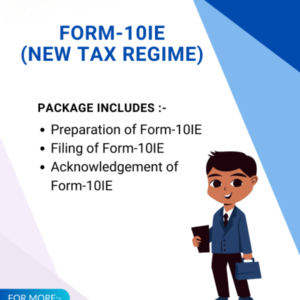Trademark Registration: A Complete Guide
A trademark is an essential part of branding, helping to identify and distinguish a business’s goods or services. It acts as a tool for protecting intellectual property and ensuring that businesses maintain exclusive control over their brand identities. Here’s a detailed overview of the benefits, process, and tips for trademark registration, particularly in India.
Benefits of Trademark Registration
- Exclusive Right to Use the Trademark
- A registered trademark gives the owner exclusive rights to use it in connection with the goods or services for which it is registered. This means that no one else can use your trademark without your permission, thereby protecting your brand identity.
- Protection from Infringement
- Trademark registration provides legal protection against unauthorized use. It helps prevent competitors or other entities from using similar trademarks that could confuse customers or harm your brand reputation.
- Increased Brand Value
- A trademark, especially a registered one, adds value to your brand. It enhances consumer trust and recognition, which can lead to more sales and customer loyalty.
- Easier Enforcement of Rights
- Once registered, enforcing trademark rights becomes more straightforward. If someone infringes on your trademark, you can take legal action more easily to protect your brand.
- International Protection
- If you plan to expand your business internationally, registering your trademark in other countries ensures you get protection in those jurisdictions as well. Through the Madrid Protocol, you can apply for trademark protection in multiple countries with a single application.
Duration of Trademark Registration
- Validity: Trademark registration lasts for 10 years from the registration date.
- Renewal: After 10 years, the trademark can be renewed for another 10-year period indefinitely by paying the renewal fees.
Tips for Trademark Registration
- Choose a Strong Trademark
- Opt for a distinctive and unique trademark. Avoid generic or descriptive terms. A strong trademark is easier to protect and enforce.
- Conduct a Thorough Trademark Search
- Before filing your application, conduct a comprehensive search to ensure your trademark is not already in use or too similar to existing trademarks. This step reduces the chances of objections.
- File Your Application Promptly
- The sooner you file your trademark application, the sooner you can begin protecting your brand. Early registration helps you secure your intellectual property before anyone else does.
- Consider Hiring a Trademark Attorney
- Navigating the trademark registration process can be complex. A trademark attorney can help you with everything from conducting searches to filing the application and responding to objections, ensuring your application has the best chance of approval.
Trademark Registration Process in India
- Preparation
- Eligibility Check: Ensure your trademark is eligible for registration and unique.
- Trademark Search: Conduct a search to avoid conflicts with existing trademarks.
- Filing the Application
- File the trademark application with the Trademark Registry. The application will need to include:
- The trademark itself.
- The class of goods or services it represents.
- The geographical area it will be used.
- You can file the application online via the Indian Trademark Office website.
- File the trademark application with the Trademark Registry. The application will need to include:
- Examination
- The Registrar of Trademarks will examine the application. They will check for compliance with legal requirements and possible conflicts with existing trademarks.
- If any objections arise, you will have an opportunity to respond.
- Publication in Trademark Journal
- If your application passes the examination, it will be published in the Trademark Journal. This publication gives third parties an opportunity to oppose the registration if they believe it could harm their interests.
- Opposition (Optional)
- If someone opposes the registration during the publication period (4 months), you must address their objections. If no opposition is filed, the registration process continues.
- Registration and Renewal
- Once the opposition period expires and no objections remain, the trademark is registered, and a certificate of registration is issued.
- The trademark is valid for 10 years and can be renewed indefinitely after each term.
Additional Benefits of Trademark Registration
- Attract Investors: Investors prefer businesses with strong trademarks as they indicate a well-defined and protected brand.
- Build Customer Loyalty: A strong, recognizable trademark increases customer confidence, which encourages loyalty.
- Expand into New Markets: Trademark registration provides protection if you decide to expand into new regions or countries, ensuring you have exclusive rights to your brand in those markets.
Conclusion
Trademark registration is a crucial step for any business looking to protect its brand identity. By ensuring exclusive rights, preventing infringement, and enhancing brand value, trademarks serve as a key asset for businesses. Whether you’re a small business owner or a large enterprise, registering your trademark provides legal protection, boosts credibility, and opens doors to international expansion. Follow the steps, consider professional advice, and enjoy the long-term benefits of a well-protected trademark.






Reviews
There are no reviews yet.